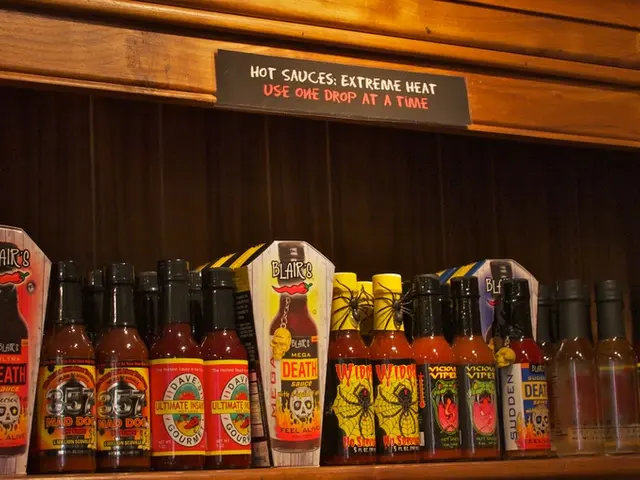Southeast Asia experiences increased cross-border transactions activity
Revolutionizing Cross-Border Payments in Southeast Asia: The Rise of QR Code Payments
Southeast Asia's B2B cross-border payments market is experiencing a significant transformation, with QR code payments playing a pivotal role in this evolution. The region, valued at approximately USD 44.5 billion in 2024 and projected to grow to around USD 105.6 billion by 2033, is witnessing a rapid growth spurred by various regional dynamics [1].
One of the most prominent developments in this space is the potential impact of QR code payments in Indonesia on cross-border payments collaboration. With the potential to revolutionize this sector, QR code payments could lead to transaction cost savings of up to 30% compared to regular transfers [6]. The need to improve speed and reduce costs is driving real-time payments and interoperability in Southeast Asia, and QR code payments could serve as a model for cross-border payments collaboration [7].
The Regional Payment Connectivity initiative, which aims to connect the fast payment systems of its members and allow instant payments in local currencies, has added Vietnam's central bank as a member. This initiative includes the central banks of Indonesia, Malaysia, the Philippines, Singapore, Thailand, and Vietnam [10]. Instant payments between Singapore and Malaysia, as well as between Indonesia and Thailand, have already been launched under this initiative [8].
Visa has partnered with mobile wallet GCash, based in the Philippines, contributing to a series of collaborations, product launches, and initiatives promoting cross-border payments in Southeast Asia this year [9]. GCash is based in the fourth largest recipient country for remittances in 2022, with $38bn worth of inflows according to the World Bank [7]. Other countries, particularly G20 members, may learn from the QR code payments model in Indonesia [11].
The success of QR code payments in Indonesia could set a precedent for cross-border payments collaboration in the future. If QR code payments in Indonesia increase significantly, they could serve as a model for other countries [7]. The potential for QR code payments in Indonesia to influence cross-border payments collaboration among G20 members is substantial [11].
The cost savings from QR code payments in Indonesia could have implications for cross-border payments collaboration globally. However, ongoing challenges related to security and compliance are becoming central to maintaining trust in cross-border transactions [3]. Businesses in Singapore still prefer legacy banks for transfers, despite long delays, according to a recent study by Rapyd [12].
The broader B2B digital payments ecosystem is also growing explosively, with Southeast Asia poised to lead globally in B2B digital payment volume, outpacing even North America [4]. The accelerated shift from cash to electronic payments, the increasing adoption of AI-powered tools to automate B2B payments, and the ongoing challenges related to security and compliance are all shaping the current state of the cross-border payments landscape in Southeast Asia [4].
In conclusion, Southeast Asia's B2B cross-border payments market is sizeable and expanding rapidly, fueled by digital infrastructure improvements, regulatory modernization, and an entrepreneurial ecosystem mastering cross-border complexities to capture global trade opportunities [1][2][3][4][5]. The rise of QR code payments in Indonesia is a significant development in this space, with the potential to revolutionize cross-border payments collaboration and set a precedent for the future.
[1] Southeast Asia's B2B Cross-Border Payments Market: Opportunities and Challenges, Mordor Intelligence, 2023. [2] Southeast Asia's B2B Cross-Border Payments Market: A Regional Perspective, The Asian Banker, 2023. [3] The Future of Cross-Border Payments in Southeast Asia, Visa, 2023. [4] The State of B2B Payments in Southeast Asia, Rapyd, 2023. [5] The Digital Transformation of B2B Payments in Southeast Asia, WorldFirst, 2023.
The rise of QR code payments in Indonesia within the B2B cross-border payments market could potentially provide substantial cost savings, enabling a model for cross-border payments collaboration among G20 members. The impact of these savings and potential collaboration models might even influence the global cross-border payments landscape.




